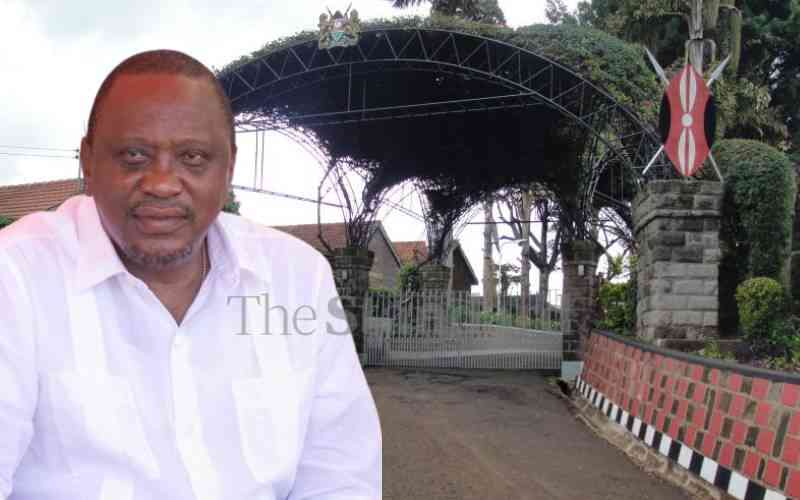It is not secret that in Kenya women are underrepresented. From the first general election held in Kenya to the most recent 2013 general elections, men have been the majority in parliament.
There was not a single female Member of Parliament (MP) in the first legislature in 1963 and today female representation has only improved slightly. There was 4.1 per cent female representation in Parliament in 1997, 8.1 per cent in 2002 and 9.8 per cent in 2007.
Even with the Constitution of Kenya (CoK) 2010 providing for the two-thirds gender rule, the 2013 general elections saw only 16 women elected MPs out of the 290 constituency seats, 88 women elected out of 1,450 ward representative seats, and no woman elected as either governor or senator.
Recognising the possibility of violating the CoK 2010 during the 2013 general election, the Attorney General (AG) filed a Request for an Advisory Opinion at the Supreme Court seeking guidance on the Two-Thirds Gender Principle. In December 2012, the Supreme Court by majority opinion found that the two-thirds gender principle had not been transformed into a full right capable of direct enforcement.
The Court opined that the Gender Principle requires ‘progressive implementation’ and prescribed a timeline for implementation by calling on Parliament to enact appropriate legislation by August 27, 2015.
The clamour for a solution to beat this deadline has resulted into a highly emotive debate with wide ranging proposals from different stakeholders including the Technical Working Group (TWG) established by the AG to look into the issue, legislators and Civil Society Organisations (CSOs). There are three legislative proposals (two of which are before Parliament) that stand a reasonable chance of becoming the basis on which the two-thirds rule will be implemented.
Firstly, the TWG, through The Two Third Gender Laws (Amendment Bill) 2015, proposes to ‘lift’ the method for gender quotas from the county assembly level (Article 177 of the CoK 2010) to the national level. Article 177 works by allowing open elections first, and if two-thirds of either gender has exceeded the balance, it is corrected by a ‘top up’ process of women in reserved seats.
The formula works as a fallback plan that encourages women to contest for open seats in the first instance, with ‘best losers’ getting priority during nominations. However, this formula doesn’t solve the conventional problem of women under-representation as it doesn’t focus on strengthening women in the long run: Nominations continue to be viewed as tokens given to women and are not a matter of right. Further, this Bill cannot be enacted into law within the stipulated deadline of August 27, 2015.
Secondly, The Constitution of Kenya (Amendment) Bill 2015, proposed by Samuel Chepkong’a, provides for the amendment of Article 81 (b) of the CoK 2010 so that the gender principle is achieved progressively, setting aside the five-year deadline and delaying the implementation of the two-thirds gender rule. Even though it meets the Supreme Court deadline, this Bill postpones the realisation of the important right on women representation.
Lastly, there is the Constitution of Kenya (Amendment) Bill, 2015 – Formula 136, which is yet to be introduced in Parliament, and is being popularised through a campaign dubbed ‘The Green Amendment Campaign’. The Campaign is being spearheaded by the National Women’s Steering Committee (NWSC) and the Kenya Human Rights Parliamentary Association (KEPHRA), with the support of CSOs including Kenya Human Rights Commission (KHRC), ActionAid Kenya, Oxfam Kenya, Amnesty International, the Institute for Education in Democracy (IED) and the Constitution & Reform Education Consortium (CRECO).
This Bill proposes a system of pairing constituencies and wards to create reserved seats for women. This will ascertain the election of 136 women to the National Assembly, 725 women to the County Assemblies, and parity in the Senate. Further, 22 persons with disabilities will be nominated by political parties to the National Assembly to comply with Article 55 of the CoK 2010. The Bill seeks to ensure that women participate in the elective process and addresses the barriers that have previously barred women from participating in competitive political processes.
This Bill also doesn’t meet the Supreme Court deadline. Parliament remains with barely one week to enact a legislation enacting a formula for the realisation of the two thirds gender rule in Parliament, and has limited options. One is to pass the Chepkong’a Bill, which will elicit pandemonium amongst members of the public, human rights organizations, and women rights activists as it is a retrogressive proposal that seeks to postpone women rights.
The other option available for Parliament is to invoke Article 261 of the CoK 2010 and extend the period prescribed in respect to enacting legislation providing for the promotion of representation of women. To pursue this option, Parliament needs to garner the support of at least two-thirds of all the members of the National Assembly (at least 233 MPs). This extension can only be for one year.
If Parliament fails to enact a law on the two-thirds within the specified time, any person may petition the High Court on the matter, resulting in the dissolution of Parliament. IED’s research focusing on other African contexts including Rwanda, Uganda, Niger, Botswana and Morocco on implementation of quota thresholds for representation through reserved seats, found that the quotas have become a ceiling for female representation.
The challenge for Kenya is therefore not how best to implement the two-thirds rule but how to ensure that the rule eventually becomes unnecessary. This thence implies that a national strategy for achieving balanced female representation should sit alongside the immediate issue of the gender quota design.
Stay informed. Subscribe to our newsletter
Any sustainable solution for Kenya should consider the role of political parties, women’s groups and CSOs as an essential ingredient for long-term success.
 The Standard Group Plc is a
multi-media organization with investments in media platforms spanning newspaper
print operations, television, radio broadcasting, digital and online services. The
Standard Group is recognized as a leading multi-media house in Kenya with a key
influence in matters of national and international interest.
The Standard Group Plc is a
multi-media organization with investments in media platforms spanning newspaper
print operations, television, radio broadcasting, digital and online services. The
Standard Group is recognized as a leading multi-media house in Kenya with a key
influence in matters of national and international interest.
 The Standard Group Plc is a
multi-media organization with investments in media platforms spanning newspaper
print operations, television, radio broadcasting, digital and online services. The
Standard Group is recognized as a leading multi-media house in Kenya with a key
influence in matters of national and international interest.
The Standard Group Plc is a
multi-media organization with investments in media platforms spanning newspaper
print operations, television, radio broadcasting, digital and online services. The
Standard Group is recognized as a leading multi-media house in Kenya with a key
influence in matters of national and international interest.









